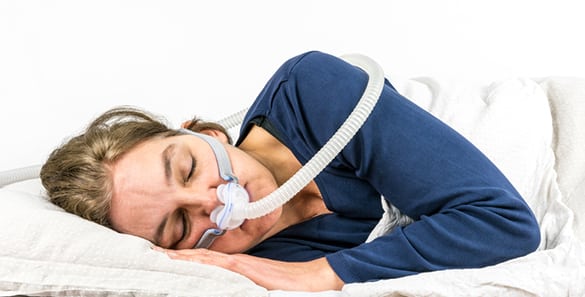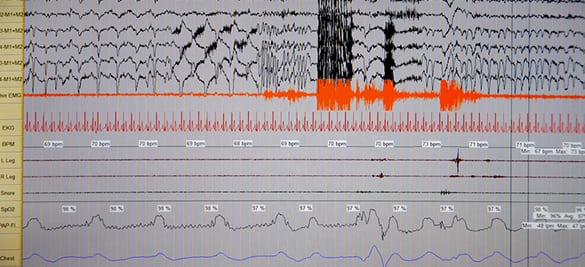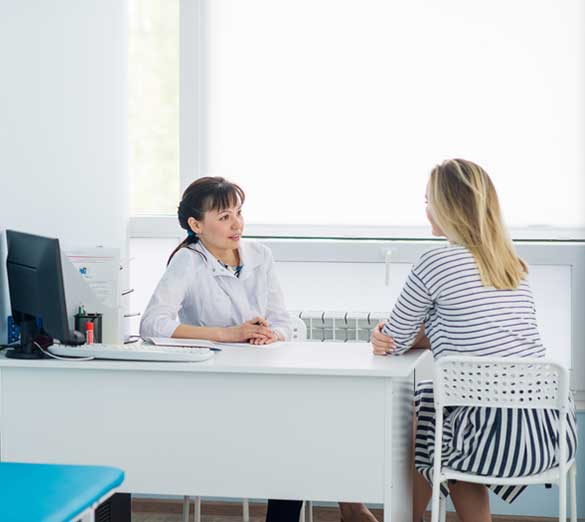
A sleep apnea study can point toward the best treatment for you.
Affecting more than 20 million Americans, sleep apnea is a potentially serious condition where breathing repeatedly stops and starts again during sleep. The most common form of the disorder is caused by throat muscle relaxation. It can also be triggered by a miscommunication between the brain and muscles that control breathing.
Because of the many possible factors involved, an ear, nose, and throat doctor may recommend one or more tests to get a better feel for how this disorder is affecting you.
Overnight Polysomnogram (PSG)
During an overnight sleep study (polysomnogram), your general sleep patterns will be monitored. Brain activity is recorded along with basic vital signs, eye movements, oxygen levels, and body and limb movements. Breathing patterns are also observed to determine the severity of the sleep apnea. Overnight sleep tests are usually performed in a lab setting or medical facility.


Multiple Sleep Latency Test (MSLT)
Performed during the day and usually after an overnight sleep study has been done, this type of sleep study measures your daytime sleepiness. Additionally, multiple sleep latency testing may be done to positively diagnose or evaluate narcolepsy. Daytime testing might also be done to determine if recommended breathing treatments are effective. An MSLT measures:
- How fast you fall asleep during the day in quiet settings
- How soon it takes you to reach deeper sleep stages
- Duration of daytime naps
PSG and CPAP Titration (Two-Night Sleep Apnea Study)
During the first night of the test, a general monitoring of sleep patterns is done. If sleep apnea is observed, you’ll be asked to return for a second night of testing. The main purpose of testing on the second night is to determine the correct pressure for continuous positive airway pressure (CPAP) treatment, which involves the use of a machine to assist with breathing while sleeping.
Split-Night PSG with CPAP Titration
This is two-step test that’s done during a single night. During the first half of the test, your sleep patterns will be recorded and observed. If it’s suspected that you may have moderate or severe sleep apnea based on what’s seen during the first half of the testing period, thee second part of the test period will be used to determine the correct pressure level for a CPAP machine.
Maintenance of Wakefulness Test (MWT)
Because sleep apnea can contribute to issues with daytime sleepiness, a maintenance of wakefulness test is sometimes done. It’s a test that assesses daytime alertness. It’s often recommended as a follow-up to a PSG. Employers typically require workers with sleep-related conditions like sleep apnea who need to be fully alert to carry out their job duties to have this type of test.
Results from any sleep apnea study you underwent will be reviewed to determine what treatments will likely benefit you. If your sleep apnea is related to underlying health issues, like diabetes, taking steps to manage both conditions may be helpful. For instance, losing weight could minimize your issues with diabetes and result in improvements with your sleep habits at the same time. Working with an ear, nose, and throat specialist to better manage seasonal allergies and other sources of nasal congestion may also minimize problems with sleep apnea.


